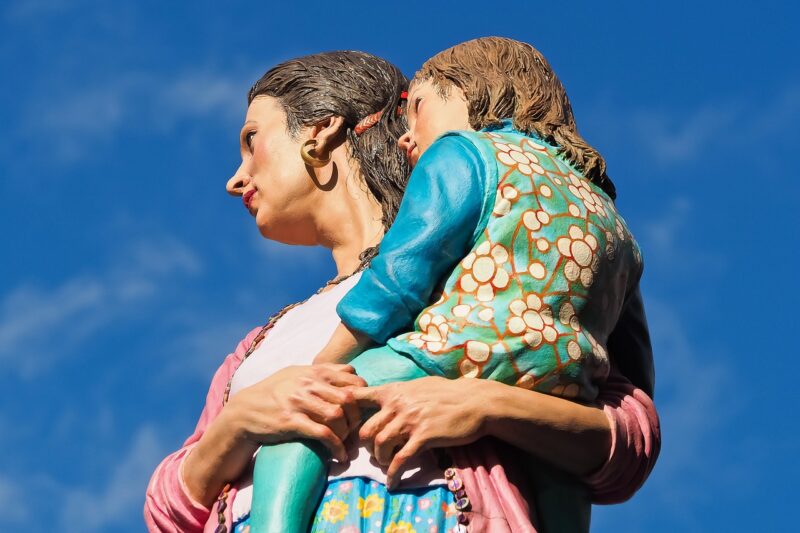
Public art has increasingly become a crucial component in the planning and design of urban spaces. These artistic expressions, which can take various forms—from murals and sculptures to installations—offer a unique way to enhance the aesthetics of a city while also reflecting its identity and culture. This article will delve into the significance of public art in urban environments, exploring its impact on community engagement, cultural identity, economic development, and social change.
1. Understanding Public Art
Public art can be defined as artworks that are made accessible to the public and are often situated in public spaces. From ancient sculptures in parks to contemporary installations in city squares, public art enriches the urban landscape and invites community interaction. It serves not only as decoration but also as a medium for communication between the artist and the community.
2. Enhancing Aesthetic Appeal and Identity
One of the primary roles of public art is to beautify urban areas. Eye-catching installations can transform dreary alleys, vacant lots, or underutilized buildings into vibrant communal spaces. Visionary urban planners understand that integrating public art into their designs enhances the beauty and character of an area, making it more inviting for residents and visitors alike.
For example, the iconic Charge of the Light Brigade mural in San Francisco brings a burst of color and history to an otherwise mundane street. Public art projects often reflect the cultural narratives of a city, conveying its history and diversity through visual storytelling. When artists draw inspiration from their surroundings, they help foster a sense of place and belonging, allowing communities to connect with their environment.
3. Fostering Community Engagement
Public art plays a vital role in fostering community engagement. It acts as a medium of expression, allowing communities to voice their thoughts, concerns, and aspirations. Participation in the creation or curation of public art fosters a sense of ownership and pride among residents.
Initiatives like community murals or sculptures often involve workshops and collaborative processes where local residents, artists, and stakeholders work together. This collaborative approach not only cultivates artistic talent but also reinforces social ties, creating a shared vision for the community’s future. Furthermore, public art events—such as art walks or open studios—bring people together, encouraging social interaction and cultural exchange.
4. Promoting Economic Development
Aside from aesthetic and social benefits, public art can also serve as a catalyst for economic development. Cities with vibrant public art scenes are often more attractive to tourists, which, in turn, boosts local businesses. Artistic installations can become landmark attractions, drawing visitors and improving foot traffic to surrounding shops and restaurants.
For instance, the famous Chicago Bean, or Cloud Gate, positioned in Millennium Park, has not only become an iconic symbol of the city but has also provided significant economic benefit through increased tourism. Additionally, public art can enhance property values, making neighborhoods more desirable for residential development.
Furthermore, cities that invest in public art often experience an influx of creative talent, as artists and creatives seek environments that embrace innovation and culture. Investing in public art initiatives can create a multiplier effect, benefiting local economies and improving overall quality of life.
5. Driving Social Change
Public art has the power to challenge societal norms and provoke dialogue around important issues. Artists utilize public spaces as platforms to address topics such as social injustice, environmental concerns, and political commentary. By presenting challenging narratives, public art can inspire thought and encourage civic engagement.
Programs like the “Before I Die” wall—a global art project that invites individuals to share their aspirations—encourage community members to reflect on existential topics and foster conversations that transcend traditional boundaries. Such works can reshape perceptions, ignite movements for social change, and challenge the status quo.
Moreover, public art can serve as a form of resistance, providing visibility to marginalized voices and promoting inclusivity within urban spaces. Projects that engage local communities in addressing their own stories produce artworks that resonate deeply with the people, thereby amplifying their voices in the urban narrative.
6. The Future of Public Art in Urban Spaces
As cities evolve, so do the needs and desires of their inhabitants. Future public art initiatives must embrace innovation, sustainability, and inclusivity. Engaging with technology, for example, will provide new dimensions of interaction in public art, such as augmented reality experiences or interactive installations that allow audiences to engage on multiple levels.
Additionally, artists and urban planners must consider the implications of climate change and resource management while creating installations. Eco-friendly materials and designs that contribute to sustainability will be vital in avoiding ecological harm while still enhancing the urban experience.
Public art will continue to shape urban spaces in profound ways, helping redefine not just the aesthetics but also the social fabric of cities. As communities advocate for art that truly represents them, this ethical approach to public art will be pivotal to future development.
Conclusion
In summary, the role of public art in shaping urban spaces is multifaceted and profoundly impactful. It beautifies, engages, and promotes economic development while driving important social conversations. As urban planners and artists continue to collaborate in reimagining our cities through public art, the results will contribute not only to enhanced urban aesthetics but also to a more engaged and resilient community fabric. Public art stands as a testament to the power of creativity in enriching the urban experience and empowering citizens to shape their world through art.
Public art ultimately creates spaces—both physical and emotional—that foster connection, reflection, and transformation, highlighting the enduring bond between art and urban life.







